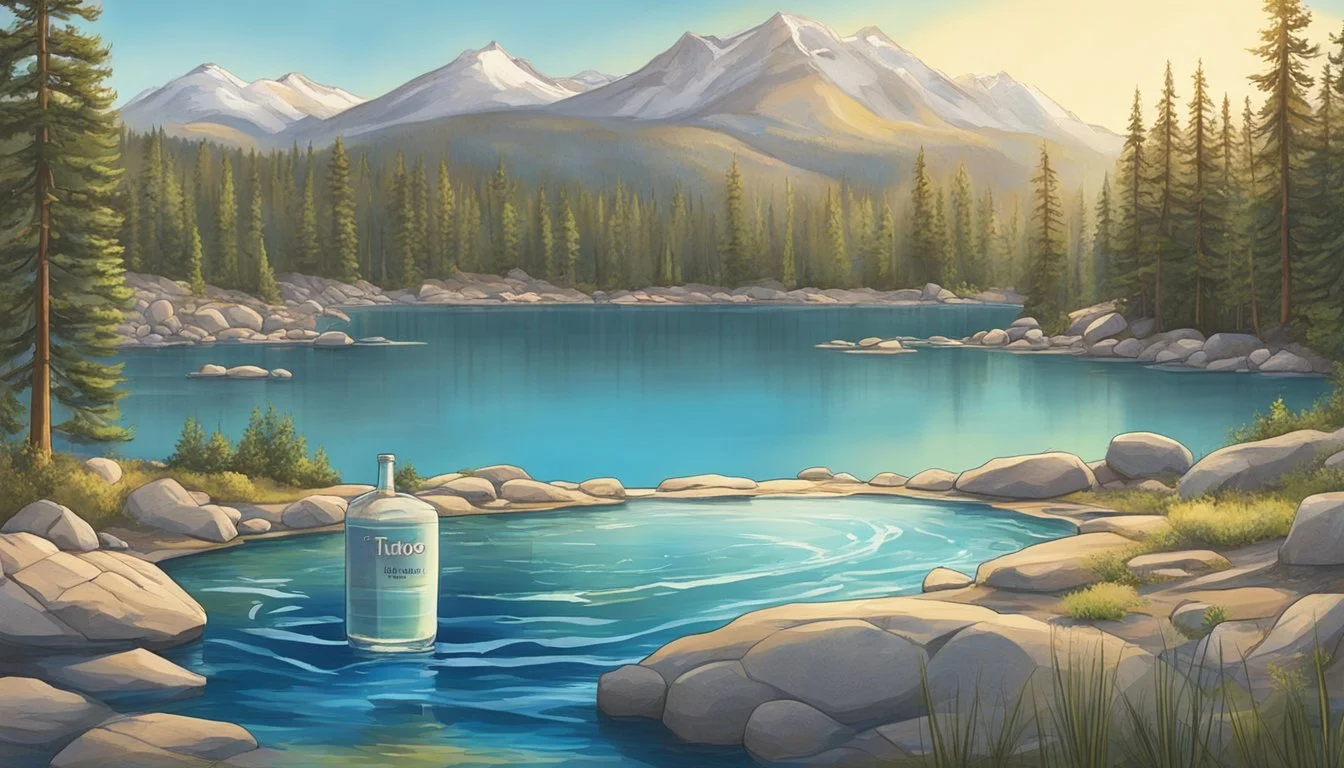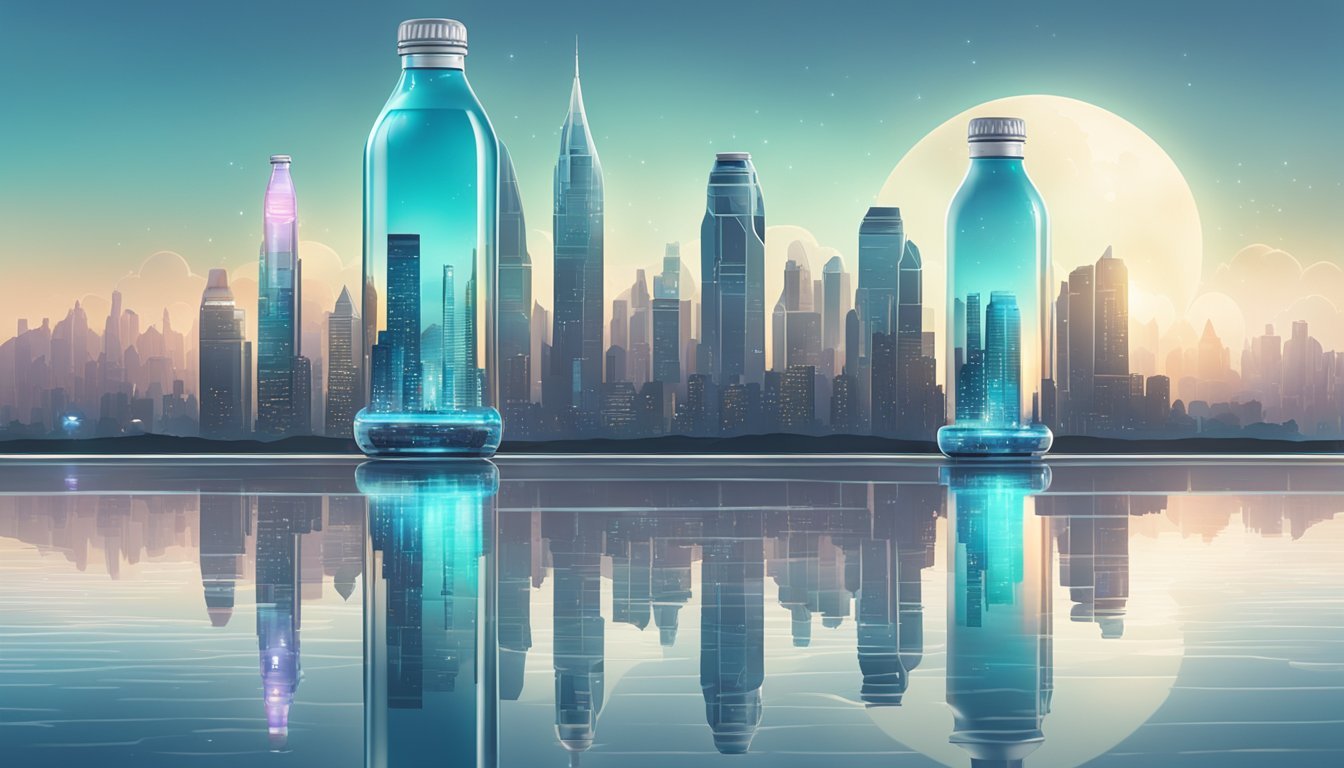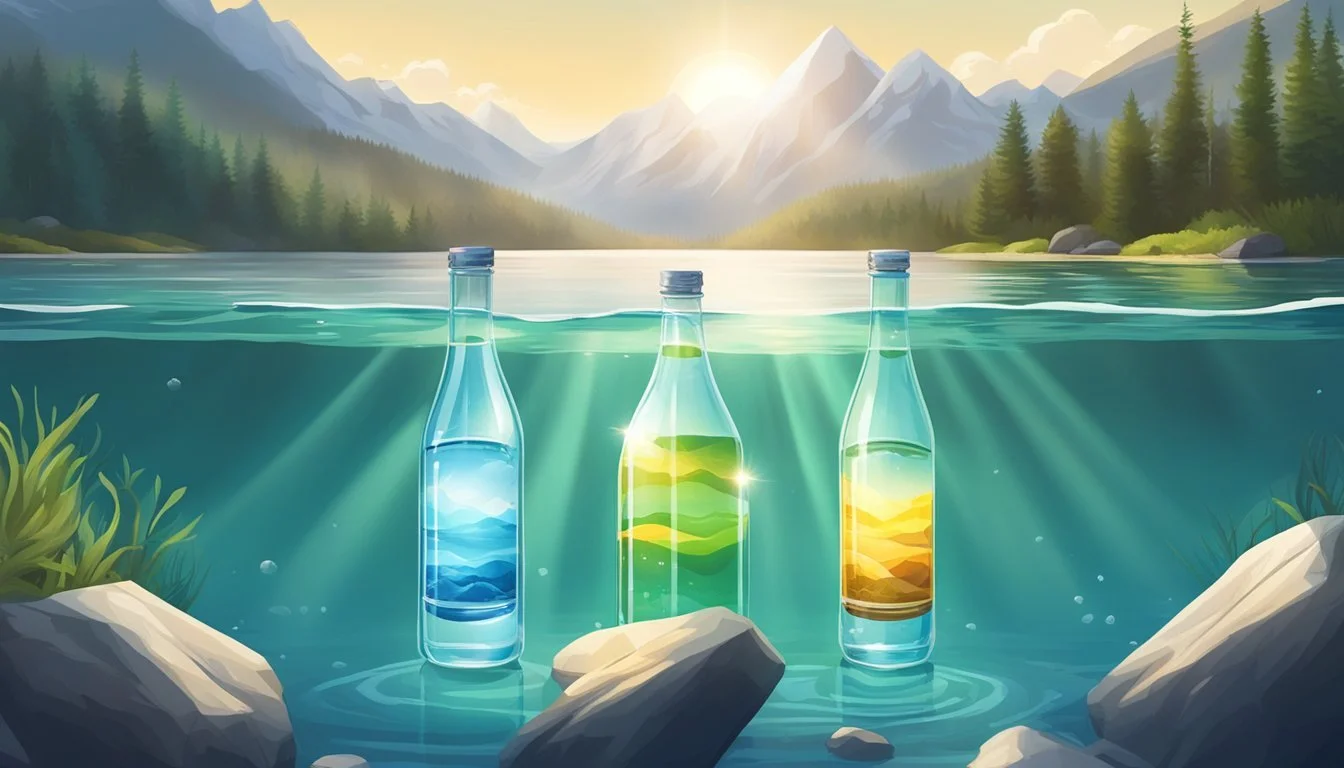Tahoe vs. The Well
Bottled Water Quality Compared
Choosing the right bottled water can be a complicated task, especially when faced with options like Tahoe and The Well. Each brand brings its unique qualities to the table, from taste to sourcing to environmental impact. This blog post will explore these aspects to help you make an informed decision.
Tahoe water is sourced from Lake Tahoe and undergoes minimal processing, preserving its natural taste and mineral content. This makes it a standout for those who prefer a more 'natural' water experience. On the other hand, The Well focuses on purity and extensive filtration, ensuring that every bottle meets high safety and taste standards.
Understanding the differences in sourcing and processing can lead you to a better choice based on your priorities. Whether you value natural minerals or rigorous filtration, this comparison will offer insights that align with your hydration needs.
Understanding Bottled Water
Understanding bottled water involves exploring its various types, industry practices, and the regulations governing its quality and distribution.
Types of Bottled Water
Bottled water can be categorized into several types, each with unique characteristics. Spring water is sourced from natural springs and often retains natural minerals, providing a distinct taste. Mineral water must contain at least 250 parts per million dissolved solids and is often valued for its mineral content.
Purified water undergoes processes such as distillation or reverse osmosis to remove impurities. It can originate from any water source, including tap or ground water, as long as it meets strict purification standards. The distinctions among these types offer consumers various options based on taste preferences and perceived health benefits.
Bottled Water Industry Overview
The bottled water industry is a significant global market, with major players producing, distributing, and marketing various bottled water brands. It includes companies like Nestlé, Coca-Cola, and PepsiCo, who control brands such as Arrowhead, Acqua Panna, and others.
According to the International Bottled Water Association (IBWA), the industry's growth is driven by increasing consumer demand for perceived purity and convenience of bottled water. Technological advancements in bottling and filtration also contribute to market expansion. Despite a strong position, the industry faces environmental challenges regarding plastic waste and water resource management.
Regulations and Oversight
Regulations in the bottled water industry ensure product safety and quality. In the United States, bottled water is regulated by the Food and Drug Administration (FDA) under the Federal Food, Drug, and Cosmetic Act. The FDA sets standards for contaminants, labeling, and processing, which must be adhered to by all bottling companies.
The Environmental Protection Agency (EPA) oversees public water systems under the Safe Drinking Water Act (SDWA). Bottled water standards by the FDA are required to be at least as stringent as those enforced by the EPA for tap water. This regulatory framework is crucial for maintaining consumer trust and ensuring that bottled water is safe for consumption.
Entity Role Food and Drug Administration (FDA) Sets standards for bottled water quality and safety Environmental Protection Agency (EPA) Oversees public water systems International Bottled Water Association (IBWA) Industry representation and advocacy
Health Considerations
When comparing Tahoe and The Well bottled water products, it is essential to examine hydration benefits, water quality and safety, and the potential presence of contaminants. This section addresses these key points.
Health Benefits of Hydration
Drinking water is vital for maintaining health. Adequate hydration helps in regulating body temperature, supporting the immune system, and flushing out toxins. Proper hydration also maintains skin elasticity and aids in digestion.
These benefits are crucial regardless of whether the water comes from bottled sources like Tahoe or The Well, or tap water. Staying hydrated can improve concentration and energy levels, which are key to overall well-being.
Comparing Water Quality and Safety
Water quality and safety often set bottled water apart from tap water. Both Tahoe and The Well claim to offer high-purity water. Each brand undergoes strict purification processes to remove potential contaminants like microbes.
It’s important to note that most municipal water suppliers also provide safe drinking water. However, bottled water brands may be preferred by those seeking reassurance in terms of water purity and consistent taste.
Contaminants and Purity
When it comes to contaminants, both bottled and tap water can sometimes contain substances like fluoride or cryptosporidium. Tahoe and The Well employ advanced filtration techniques to ensure the highest purity. Regular testing helps maintain their reputation for quality.
Municipal water might sometimes face issues related to old infrastructure which can introduce contaminants. Bottled water tends to have fewer such risks due to rigorous testing by both brands and regulatory bodies like the Water Suppliers Association.
Focusing on these aspects provides a clearer picture of how Tahoe and The Well maintain the safety and quality of their offerings, ensuring that the water you drink supports your health.
Tahoe vs. The Well
Tahoe and The Well represent two distinct bottled water options, each with unique qualities and sources. Details include their taste profiles, mineral content, and sourcing methods.
Tahoe Water Exploration
Tahoe water is sourced directly from the pristine Tahoe Basin in California. This water typically features a balanced mineral profile, with low sodium levels and moderate potassium content. Consumers appreciate its clean and crisp taste, a result of the area's high water quality standards.
Tahoe water is often noted for its purity, as it undergoes minimal processing. This bottled water is reflective of Lake Tahoe's clean environment, providing a refreshing drinking experience for those who prefer a taste that mirrors natural spring water with fewer sediments and contaminants.
Unlocking the Secrets of Well Water
The Well water is often drawn from artesian wells, a groundwater source that can provide naturally filtered water. Artesian well water is pushed to the surface under natural pressure, often resulting in a mineral-rich beverage.
Depending on the well's geographic location, the mineral content can vary considerably. Common minerals include calcium and magnesium, both of which contribute to the water's taste and potential health benefits. Well water sometimes contains a slight sulfur taste due to its mineral content.
Taste Profile Comparison
Tahoe and The Well each have distinctive taste profiles catering to different preferences. Tahoe water offers a clean, crisp taste with a subtle balance of minerals, appealing to those who prefer a light and refreshing flavor. The low sodium and moderate potassium levels enhance its palatability.
In contrast, The Well water's taste can be richer and heavier due to its mineral content, especially if the water comes from an artesian source with higher levels of calcium and magnesium. The potential for a slight sulfur taste makes it unique but may not appeal to everyone.
The choice between Tahoe and The Well depends heavily on personal taste preferences and desired mineral content.
Environment and Sustainability
Tahoe and The Well offer contrasting approaches to environmental and sustainability issues, heavily influencing consumer choices. This section examines the environmental impact of bottling and waste management practices.
Environmental Impact of Bottling
Both Tahoe and The Well are scrutinized for their environmental impact due to the production and transportation of plastic bottles. The Environmental Protection Agency (EPA) highlights the significant carbon footprint linked to plastic production.
Tahoe sources its water from large city supplies and transports it to the bottling facility, creating considerable carbon emissions. This transportation increases environmental risks like natural disasters due to climate change.
The Well, emphasizing sustainability, strives to use locally sourced materials and biodegradable options where feasible. Their efforts to reduce reliance on traditional plastics aim to lessen the negative impact on the environment. Additionally, they invest in energy-efficient bottling processes to minimize their carbon footprint.
Waste Management and Recycling
Waste management and recycling processes present a challenge for both brands. The primary focus is on reducing plastic waste and promoting recycling.
Tahoe participates in the "Drink Tahoe Tap" initiative, which promotes the use of refill stations to cut down on single-use plastic bottles. This aligns with sustainability goals, aiming to reduce waste and encourage the reuse of containers.
The Well focuses on using recyclable materials and implementing comprehensive recycling programs. They collaborate with environmental organizations to enhance recycling rates and ensure that used bottles do not end up in landfills. Emphasis is also placed on consumer education regarding proper disposal and recycling practices, championing a closed-loop system for plastic use.
By addressing both production and post-consumer waste, these brands are taking steps towards better environmental stewardship.
Consumer Choices and Preferences
Consumers' decisions when choosing bottled water often involve factors such as taste, cost, and convenience. The preference between Tahoe and The Well stirred various opinions guided by these essential aspects.
Purchasing Decisions
In purchasing decisions, consumers consider factors like ease of access and brand reputation. Grocery stores frequently stock both Tahoe and The Well due to their popularity. Many buyers prioritize convenience, opting for brands that are widely available in nearby stores.
Brand loyalty also plays a significant role. Regular customers may prefer a specific brand like Tahoe due to previous satisfactory experiences. Others may switch between brands based on availability and promotions.
Marketing strategies significantly impact consumer choices. Brands often use advertising to highlight their water’s purity and health benefits, influencing consumer perception and purchasing behavior.
Consumer Taste Tests
Taste preference is a critical factor for bottled water sales. Blind taste tests often help determine consumer preferences without brand bias. In such tests, individuals taste various water samples, including Tahoe and The Well, without knowing which brand they are consuming.
Results from these tests sometimes show varied responses. Some prefer Tahoe for its clean taste, while others like The Well for its subtle mineral notes.
Texture and aftertaste are also essential considerations. Tahoe tends to be favored for its smooth texture and minimal aftertaste. Meanwhile, The Well's slight mineral essence appeals to those looking for a unique taste profile.
Price Consideration and Value
Cost is a major determining factor in consumer choice. Tahoe is often priced at a premium due to its branding and perceived higher quality. However, it offers good value for those who prioritize taste and purity.
The Well is generally more affordable, making it an attractive option for budget-conscious consumers. Despite its lower price, it maintains a reputation for quality, making it a competitive choice.
Comparing the value of each brand involves not only the price but also the perceived benefits. Consumers weigh these benefits against their cost, including aspects such as taste, packaging, and health claims. In grocery stores, both brands are frequently on sale, making them accessible to a broader audience.
Water in Emergencies
In emergency situations, water is a critical resource. People often debate the reliability and safety of bottled water versus tap water during natural disasters or other crises.
Bottled vs. Tap Water in Crisis Situations
Bottled water can be easier to store and distribute in emergencies. It comes in sealed, portable containers that can be readily transported to affected areas. This makes it an ideal choice for immediate relief efforts.
Tap water, on the other hand, requires infrastructure which may be compromised during natural disasters. Nevertheless, public systems are often designed with robust safety measures. For instance, the Tahoe Water Suppliers Association ensures the quality of Lake Tahoe’s tap water, considered amongst the cleanest.
The Flint, Michigan crisis illustrates the vulnerability of tap water systems. Contingency plans often include bottled water distribution to supplement compromised tap supplies. Cleanup and infrastructure repairs for tap water can be prolonged, making bottled water a key resource for sustained emergencies. Therefore, having both options available is crucial for health and safety.
The Future of Water Consumption
The future of water consumption will see significant growth in advanced filtration technologies and a surge in sustainable practices. Consumers will benefit from enhanced water quality and eco-friendly options.
Advances in Filtration and Purification
Technologies such as reverse osmosis and carbon filters are becoming more prevalent. Reverse osmosis, a process that removes contaminants by pushing water through a semi-permeable membrane, is praised for its effectiveness.
Carbon filters, on the other hand, excel in removing chlorine and other impurities. These advancements ensure that water is not only safe but also tastes better.
Moreover, the Food and Drug Administration (FDA) strictly regulates these systems to maintain sanitary conditions. This oversight guarantees that the water meets high health standards, providing consumers with confidence in the quality of their drinking water.
Sustainable Practices in the Water Industry
Sustainability is a growing focus within the water industry. Efforts to reduce single-use plastics are leading to increased popularity of reusable water bottles. Brands are adopting eco-friendly packaging, moving towards materials that are biodegradable or fully recyclable.
Additionally, many companies are investing in infrastructure that supports water refill stations, reducing dependency on single-use bottles. These initiatives are crucial in addressing environmental concerns and promoting healthier consumer habits.
Retailers and manufacturers are also emphasizing the importance of green practices, further encouraging a shift towards an environmentally conscious market.
Conclusion
After examining both Tahoe and The Well bottled water brands, several factors stand out.
Clarity and Purity: Both brands boast high levels of clarity, essential for consumer trust. Laboratory tests indicate minimal impurities, ensuring a clean drinking experience.
pH Balance: Tahoe water tends to have a slightly alkaline pH, which is often preferable for maintaining a balanced internal environment. The Well also offers a balanced pH, suitable for daily consumption.
Quality Reports: Regular quality control reports for both brands demonstrate commitment to safety and excellence. These reports highlight a consistency that is vital for consumer confidence.
Microplastics and Chemicals: Both brands emphasize their commitment to avoiding microplastics and endocrine-disrupting chemicals. Ensuring bottles are free from harmful contaminants is a significant selling point.
Crystal Geyser Comparison: In a landscape dominated by popular names like Crystal Geyser, Tahoe and The Well distinguish themselves through their unique mineral profiles and sustainable practices.
Aspect Tahoe The Well pH Level Slightly Alkaline Balanced Mineral Content High in Potassium, Low Sodium Moderate Minerals Purity High High Microplastic-Free Yes Yes Clarity Crystal Clear Crystal Clear
Bottom Line: Both brands offer high-quality bottled water options with slight differences in mineral content and pH balance. Personal preference and specific needs can guide the choice between Tahoe and The Well, each delivering on promises of purity and safety.
More About Tahoe
Mountain Valley Spring Water vs Tahoe: Which Bottled Water is Better?
Tahoe vs Richard's Rainwater: Which Bottled Water is Better?
Tahoe vs Whole Foods Italian Still Mineral water: Which Bottled Water is Better?
More About The Well
Cascade Mountain vs The Well: Which Bottled Water is Better?
Hawaiian Springs vs The Well: Which Bottled Water is Better?
Icelandic Glacial vs The Well: Which Bottled Water is Better?
Mountain Valley Spring Water vs The Well: Which Bottled Water is Better?
Nestle Pure Life vs The Well: Which Bottled Water is Better?
Richard's Rainwater vs The Well: Which Bottled Water is Better?
The Well vs Kirkland Signature: Which Bottled Water is Better?
The Well vs Talking Rain AQA: Which Bottled Water is Better?
Whole Foods Italian Still Mineral water vs The Well: Which Bottled Water is Better?








